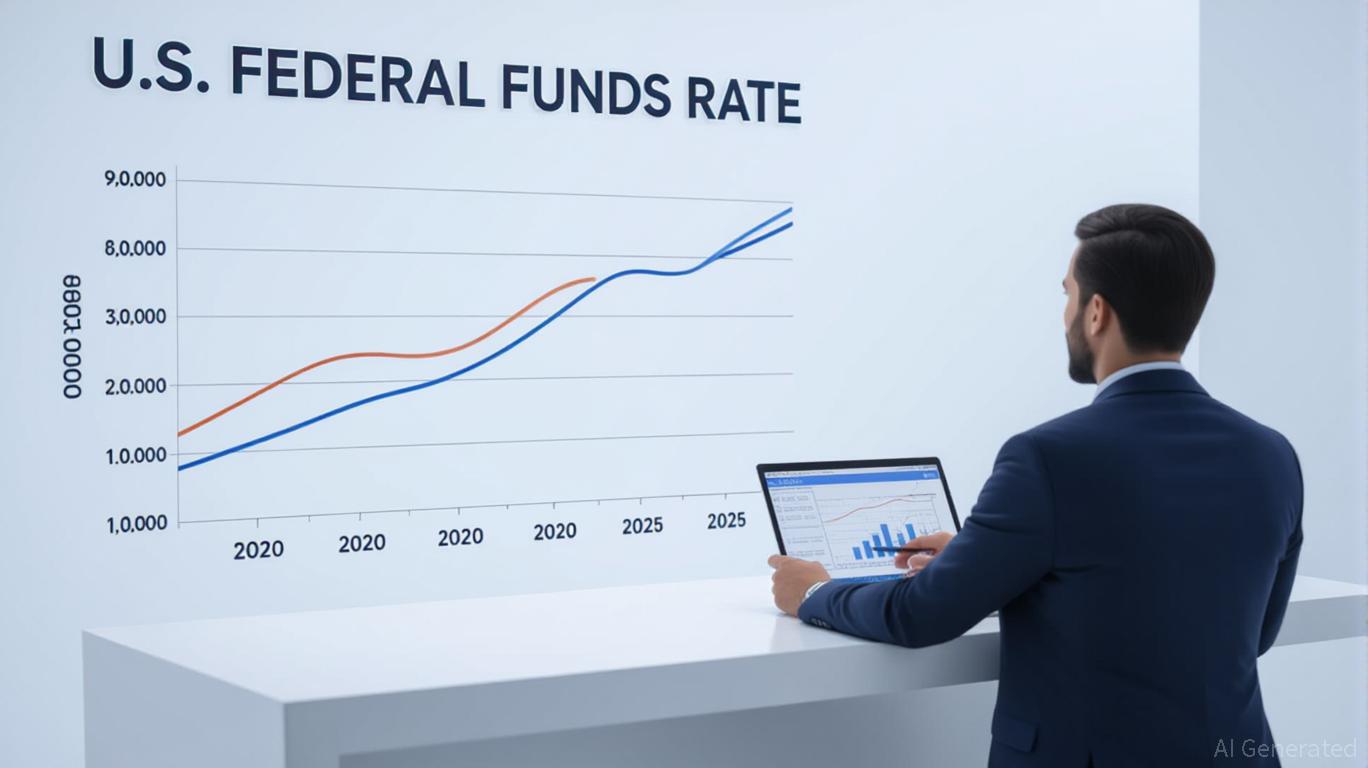The Federal Reserve’s 2025 policy trajectory has become a focal point for investors, policymakers, and economists alike. Amid a fragile labor market, persistent inflationary pressures from Trump-era tariffs, and escalating political tensions, the central bank faces a delicate balancing act. The question is no longer whether the Fed will ease monetary policy but when and how it will do so without compromising its independence or exacerbating inflation risks.
The Fed’s Dilemma: Data-Driven Policy vs. Political Headwinds
At its July 2025 meeting, the Federal Open Market Committee (FOMC) maintained the federal funds rate at 4.25–4.5%, a range that has persisted since December 2024. This decision reflected a cautious stance: while inflation has moderated in sectors like services, core price pressures remain stubbornly high, and tariffs on goods have introduced new uncertainties. The labor market, though strong (unemployment at 4.1%), shows early signs of strain, with tepid job growth and a “curious state of balance” between slowing labor supply and demand.
The FOMC’s forward guidance now anticipates two 25-basis-point rate cuts by year-end, aligning with market expectations. However, this path is far from certain. The Fed’s revised policy framework, emphasizing price stability and a broader mandate, underscores its resolve to avoid repeating the mistakes of 2020–2021, when accommodative policies fueled a surge in inflation. Yet, political pressures loom large. President Trump’s relentless criticism of Fed Chair Jerome Powell—labeling him a “loser” and demanding cuts to lower borrowing costs—has intensified scrutiny on the central bank’s independence.

Market Reactions and the Shadow of Stagflation
The Jackson Hole Economic Symposium in August 2025 marked a turning point. Powell’s speech, while noncommittal on the timing of cuts, signaled a shift in the Fed’s risk calculus. He warned of a “stagflationary scenario” where inflation and weak growth could coexist, a dire prospect for markets. The speech triggered a sharp rally in equities and bonds: the Dow Jones surged over 900 points, and Treasury yields fell as traders priced in an 89% chance of a September rate cut.
Yet, the market’s optimism is tempered by reality. Trump’s tariffs, which have already pushed up goods prices, could prolong inflationary pressures. J.P. Morgan Research estimates that these policies may reduce U.S. GDP growth by 0.5–1.0% in 2025, while increasing inflation by 0.3–0.5 percentage points. For investors, this means a dual risk: a potential rate cut to support growth could clash with the need to combat inflation, creating volatility in asset prices.
Political Interference and the Fed’s Independence
The Fed’s independence is under unprecedented strain. Trump’s threats to remove Governor Lisa Cook and his appointment of Stephen Miran to the FOMC—despite Cook’s term not expiring until 2038—highlight a broader strategy to reshape the central bank. While the U.S. system allows the president to remove the Fed chair “for cause,” this provision remains untested in court. The erosion of central bank autonomy, as seen in countries like Turkey and Argentina, risks undermining the dollar’s global role and investor confidence.
Powell’s insistence on data-driven decisions is a critical bulwark against politicization. Yet, dissent within the FOMC—such as Governor Christopher Waller’s push for earlier cuts—reveals internal divisions. These fractures could delay or accelerate policy shifts, adding to market uncertainty.
Investment Implications: Hedging Against Uncertainty
For investors, the 2025 environment demands agility. Here are key considerations:
Diversification Across Sectors: Tech and AI-driven companies have shown resilience, while energy and industrials face inflation-linked risks. Rebalance portfolios to favor sectors less sensitive to rate hikes. Inflation Hedges: Short-term Treasuries and inflation-protected securities (TIPS) offer protection against rising prices. Gold and commodities may also play a role. Currency Exposure: A weaker dollar, driven by rate cuts and Trump’s trade policies, could benefit emerging markets but hurt U.S. exporters. Equity Valuation: The S&P 500’s forward P/E ratio of 22x suggests moderate valuations, but earnings growth must outpace inflation to justify optimism. Conclusion: A Precarious Path Forward
The Fed’s 2025 policy path is a high-stakes gamble. While rate cuts may stabilize a slowing economy, they risk reigniting inflation or eroding the central bank’s credibility. Political pressures, meanwhile, threaten to politicize a critical institution. For markets, the key lies in balancing short-term relief with long-term stability. Investors must remain vigilant, leveraging macroeconomic data and strategic diversification to navigate this volatile landscape.
In the end, the Fed’s ability to maintain its independence—and its commitment to its dual mandate—will determine not only the trajectory of U.S. monetary policy but the broader health of global financial markets.
